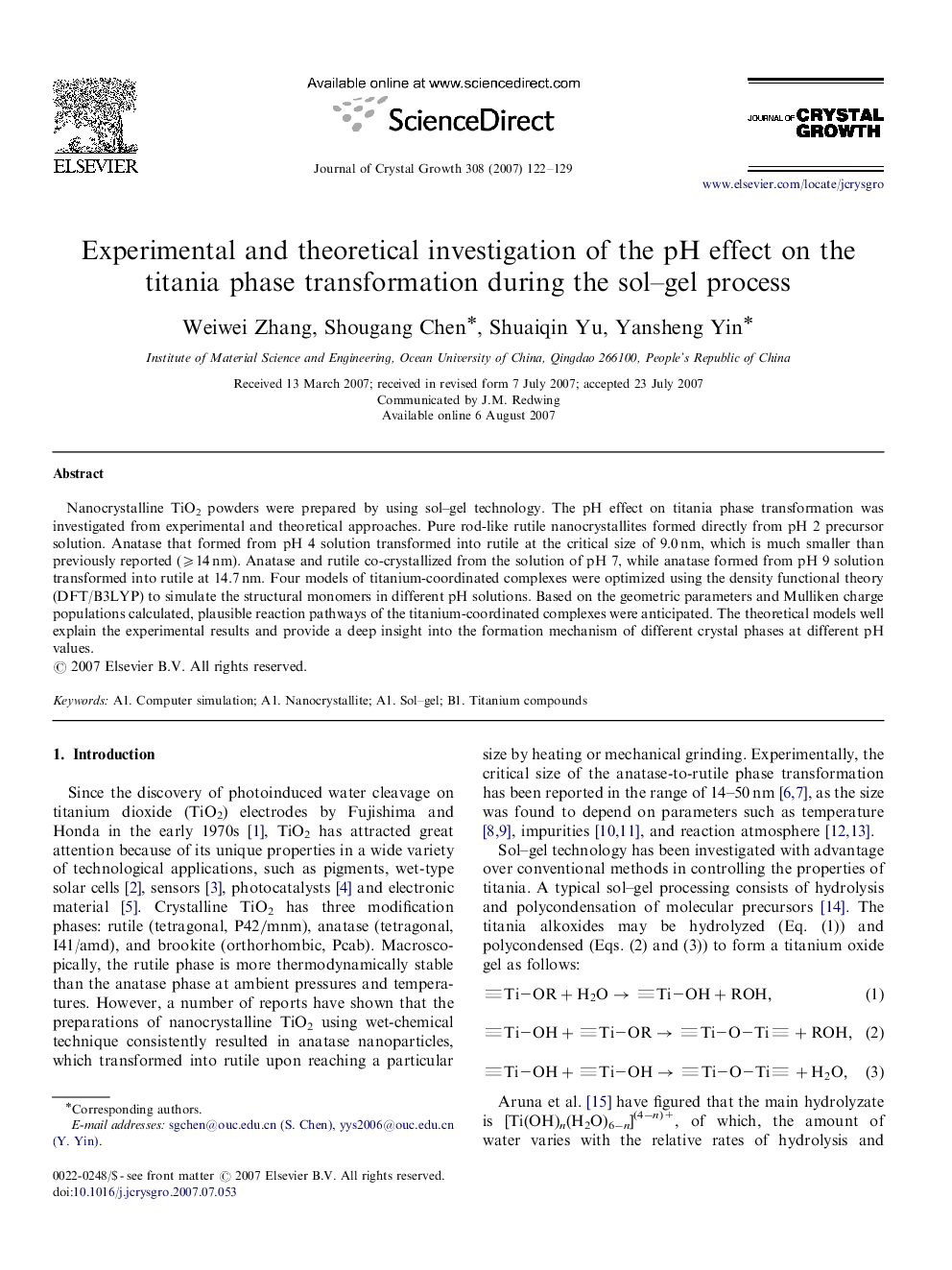| Article ID | Journal | Published Year | Pages | File Type |
|---|---|---|---|---|
| 1796157 | Journal of Crystal Growth | 2007 | 8 Pages |
Nanocrystalline TiO2 powders were prepared by using sol–gel technology. The pH effect on titania phase transformation was investigated from experimental and theoretical approaches. Pure rod-like rutile nanocrystallites formed directly from pH 2 precursor solution. Anatase that formed from pH 4 solution transformed into rutile at the critical size of 9.0 nm, which is much smaller than previously reported (⩾14 nm). Anatase and rutile co-crystallized from the solution of pH 7, while anatase formed from pH 9 solution transformed into rutile at 14.7 nm. Four models of titanium-coordinated complexes were optimized using the density functional theory (DFT/B3LYP) to simulate the structural monomers in different pH solutions. Based on the geometric parameters and Mulliken charge populations calculated, plausible reaction pathways of the titanium-coordinated complexes were anticipated. The theoretical models well explain the experimental results and provide a deep insight into the formation mechanism of different crystal phases at different pH values.
